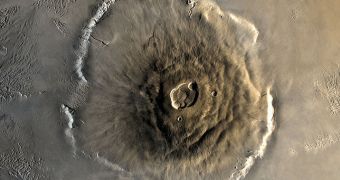Encouraged by their success in finding hundreds of extrasolar planets, astronomers are now turning their eyes on identifying several other features on these worlds, which may be indicative that they resemble Earth. Volcanoes are now one of them, experts say.
While analyzing our own solar system, experts identified traces of former volcanic activity on Mars. Or neighboring planet features tremendously large volcanoes, that would put Earth's to shame, if the planet were still geologically active.
Further outwards, the Jovian moon Io is an example of volcanic brutality. It is the most active body in the solar system, spewing out massive amounts of matter at regular intervals. The same type of events may be taking place in star systems throughout the galaxy, and beyond.
Conceivably, the existence of volcanoes on other planets is possible. If so, experts wonder, how can we go about detecting them? At this point, there are over 500 confirmed exoplanet, plus NASA Kepler telescope's batch of 1,235 candidates, that await confirmation themselves.
“You would need something truly earthshaking, an eruption that dumped a lot of gases into the atmosphere. Using the James Webb Space Telescope, we could spot an eruption 10 to 100 times the size of Pinatubo for the closest stars,” says Lisa Kaltenegger.
The expert holds an appointment as an astronomer at the Harvard-Smithsonian Center for Astrophysics (CfA). She says that astronomers do not yet posses the technology required to directly image the surface of exoplanets and their moons.
But today's most sensitive telescopes can sometime see the atmosphere of hot Jupiter-class exoplanets. As such, any changes brought forth by massive volcanic eruptions could be identified even at this time.
“Our first sniffs of volcanoes from an alien Earth might be pretty rank! Seeing a volcanic eruption on an exoplanet will show us similarities or differences among rocky worlds,” Kaltenegger says.
Younger or tidally-active planets are the most likely targets for revealing eruptions. Yet, experts know that the largest events of this type occur infrequently, making observations more difficult to conduct.
“Once you detected one eruption, you could keep watch for further ones, to learn if frequent eruptions are common on other planets,” concludes CfA astronomer Wade Henning, quoted by Daily Galaxy.

 14 DAY TRIAL //
14 DAY TRIAL //